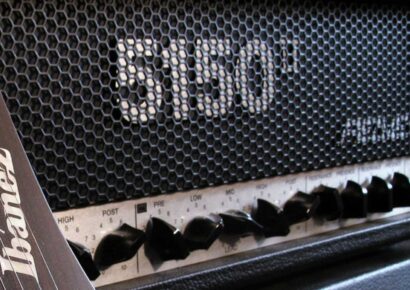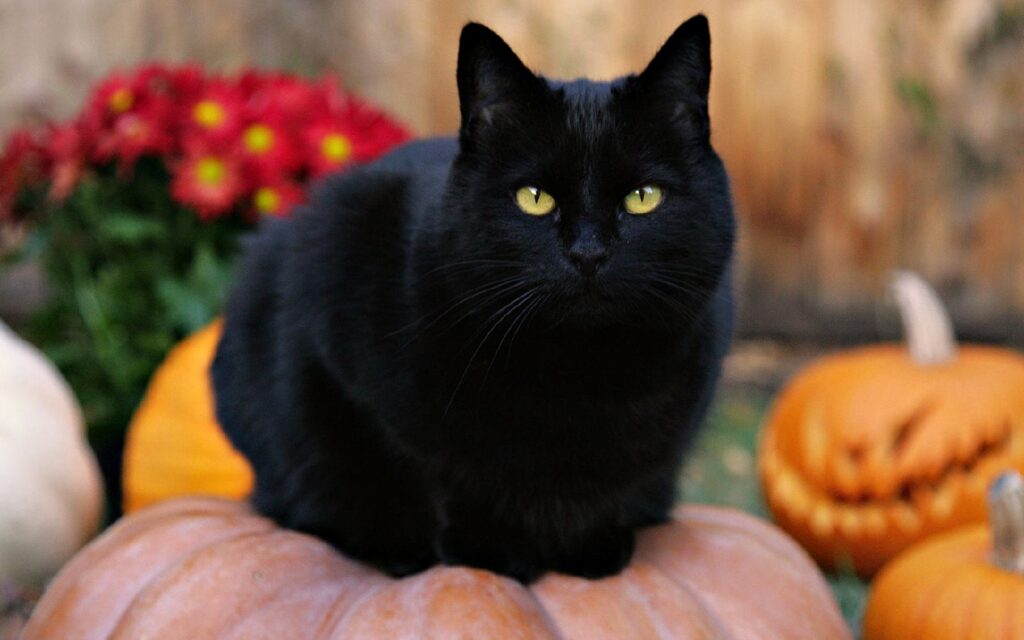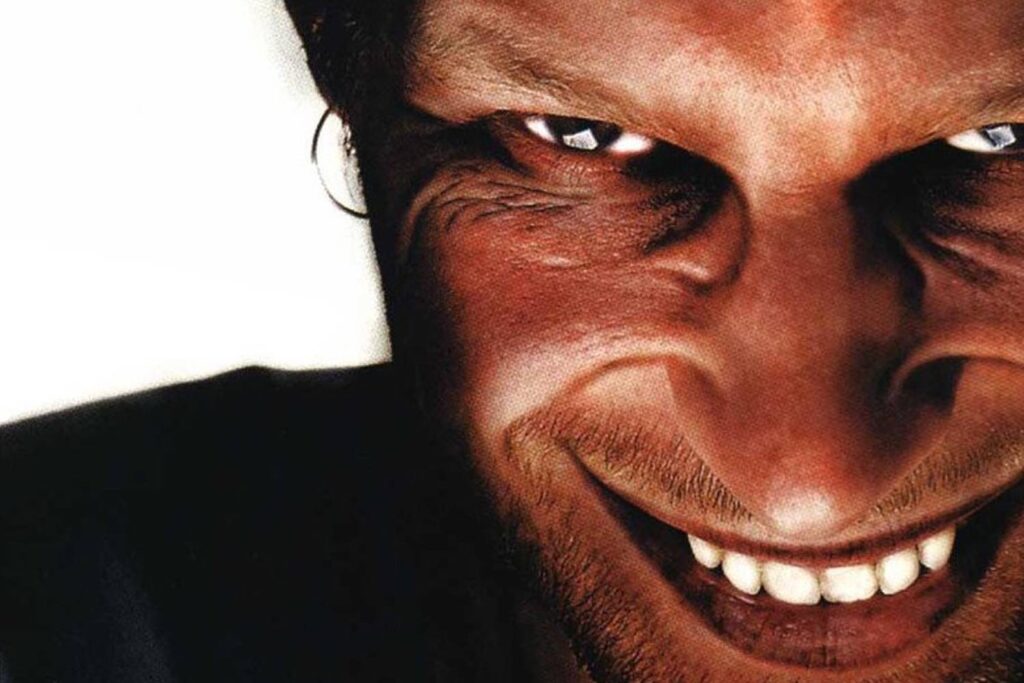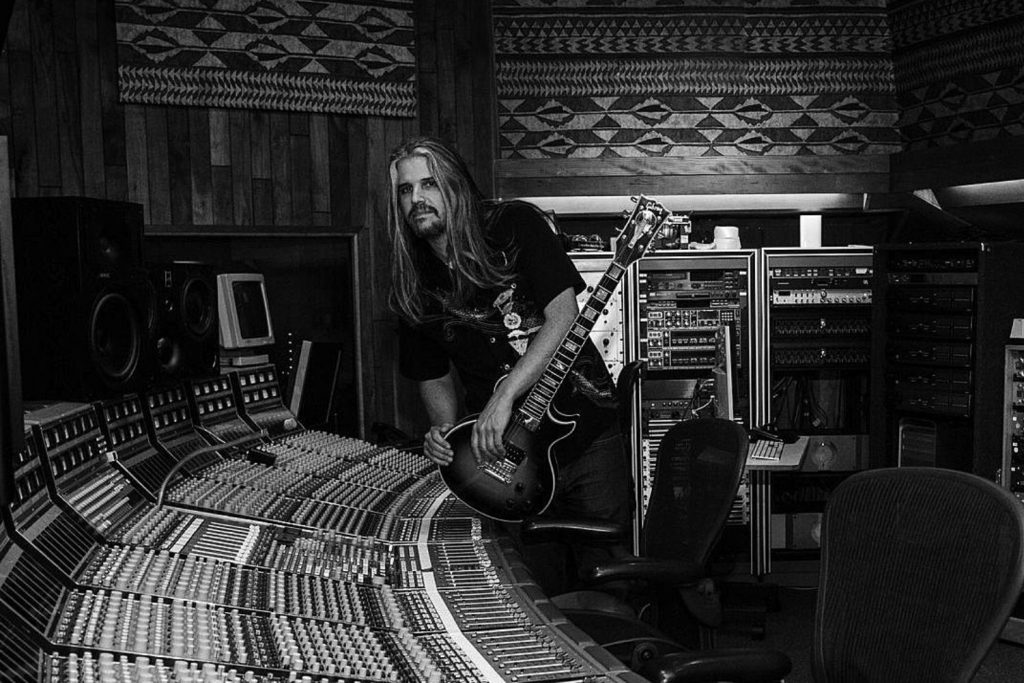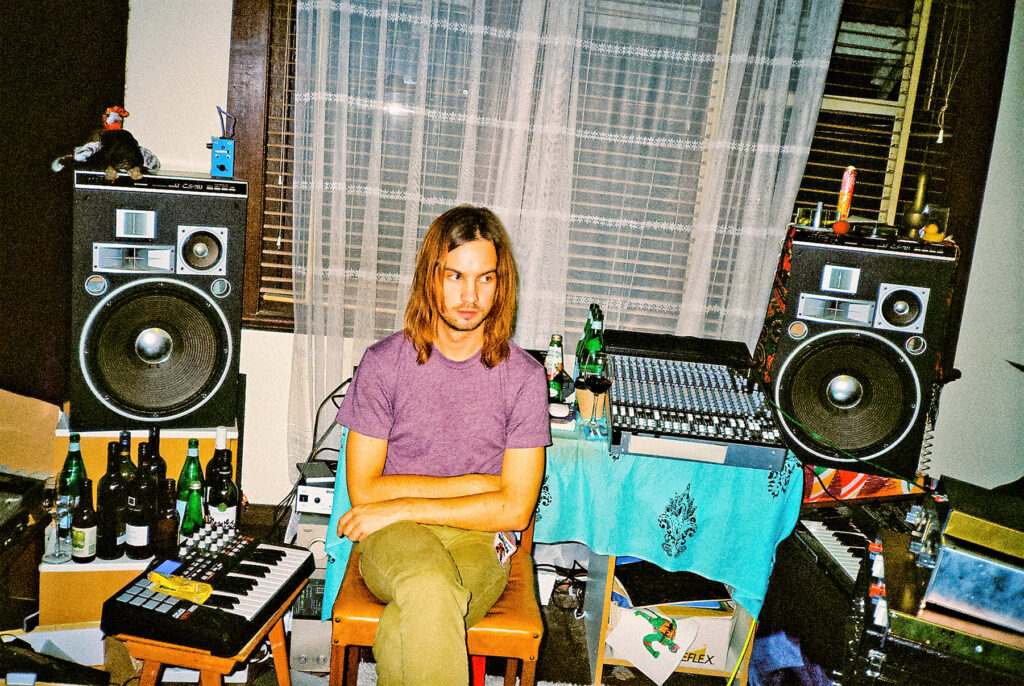Analysing the gear of the ultimate grunge icon - Nirvana's Kurt Cobain.
Long before he was a digitised character on Guitar Hero, Kurt Cobain and Nirvana were one of the biggest acts on the planet, blending the attitude of punk, a sound and aesthetic that were born of Seattle’s underground hardcore scene, and a gift for penning anthemic pop songs.
Behind all of the hype of ‘grunge’ lay a skilled guitarist, who was responsible for re-popularising Fender guitars amongst the new generation of 90s rock bands. In this edition of Gear Rundown, we look at Cobain’s setup.
Read up on all the latest features and columns here.
Kurt Cobain guitars
1969 Fender Mustang
The main guitar used throughout the years and the one most identifiable with Kurt Cobain was his 1969 Fender Mustang. It was a left handed version that was painted blue with racing stripes.
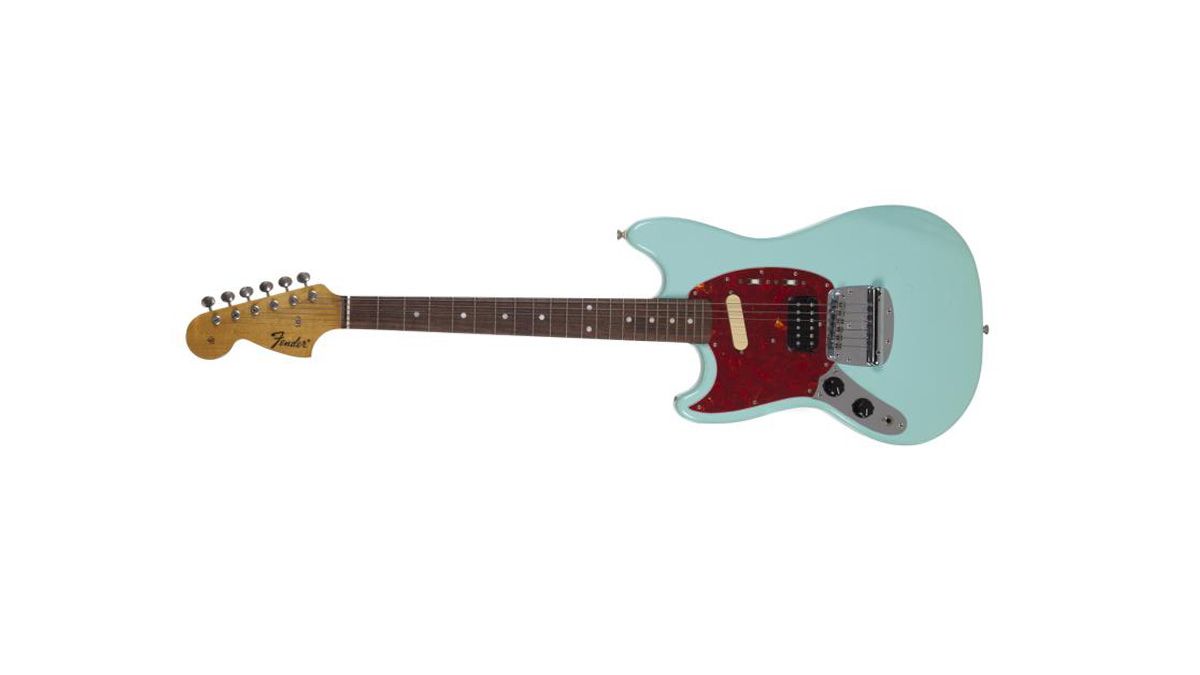
“I’m left-handed, and it’s not very easy to find reasonably priced, high-quality left-handed guitars. But out of all the guitars in the whole world, the Fender Mustang is my favourite,” said Cobain in a 1992 interview with Guitar World.
“I’ve only owned two of them. They’re cheap and totally inefficient, and they sound like crap and are very small. They also don’t stay in tune, and when you want to raise the string action on the fretboard, you have to loosen all the strings and completely remove the bridge. You have to turn these little screws with your fingers and hope that you’ve estimated it right. If you screw up, you have to repeat the process over and over until you get it right.”
1965 Fender Jaguar

The other iconic guitar favoured throughout Nirvana’s career was his 1965 Fender Jaguar. When he initially used it this left handed model had a Dimarzio PAF pickup in the neck position and a Dimarzio Super Distortion in the bridge position, though the latter was switched to a Seymour Duncan JB, after being damaged onstage in 1993.
It was also fitted with an additional volume control, and the original pickup selectors were swapped with a single Gibson-style switch.
“I own a ’66 [apparently actually ‘65] Jaguar. That’s the guitar I polish and baby — I refuse to let anyone touch it when I jump into the crowd,” said Cobain.
“Lately, I’ve been using a Strat live, because I don’t want to ruin my Mustang yet. I like to use Japanese Strats because they’re a bit cheaper, and the frets are smaller than the American versions.”
Besides these, Cobain was known to use a 1993 Fender Telecaster with a sunburst finish and a Gibson pickup in the neck, an Epiphone ET-270, a Univox Hi-Flier, a Martin D-18E, a Mark IV-style Mosrite Gospel guitar, and various Japanese Stratocasters that were used for smashing at the end of each show.
Martin D-18E acoustic
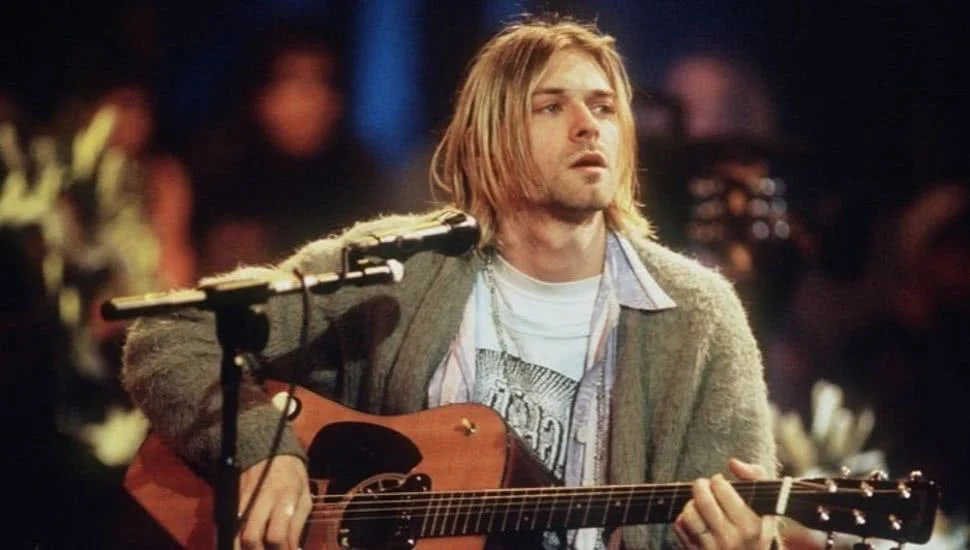
Although the proliferation of the MTV Unplugged series meant that every other artist was stripping back their greatest hits set with often mixed results (looking at you, Korn), Nirvana’s set was undeniably brilliant.
Kurt Cobain and his pained vocals and powerful songs were presented in a whole new, and unexpected light. Although not the first time Nirvana had employed acoustics, it is definitely their biggest use of one.
For that show Cobain used a 1958/59 Martin D-18E acoustic that he had bought in late 1993. This was one of the earliest Martins to feature electric pickups, though Cobain replaced the stock DeArmond pickups with a Bartolini 3AV.
Prior to MTV Unplugged, Nirvana had used acoustics on a few recordings, the most notable being the Nevermind track ‘Polly’. The guitar used on that track, as well as ‘Something in the Way’ from the same album, was a Harmony Stella 12-string, which Cobain bought from a second hand shop in 1989 for $30. Although a 12-string guitar, Cobain played it with only five.
Harmony Stella 12-string
“That’s a 20-dollar junk shop Stella — I didn’t bother changing the strings,” he said. “It barely stays in tune. In fact I have to use duct tape to hold the tuning keys in place.”
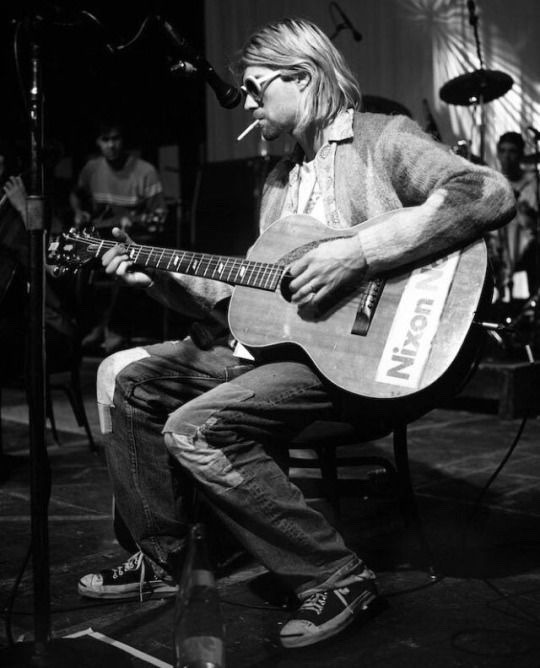
1960s Fender Twin Reverb
Apparently Cobain’s preferred amp was a 1960s Fender Twin Reverb, which he used to record In Utero, as well as MTV Unplugged. He also used a similar amp during the recording of Bleach, though it is unknown if it was the exact same one.
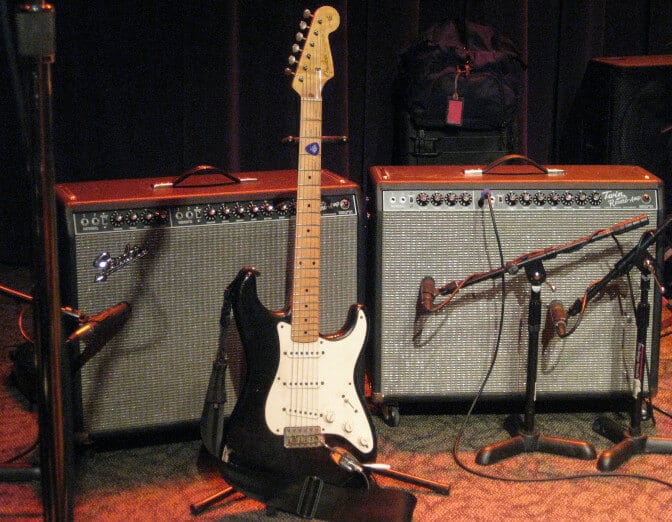
He also favoured a Mesa/Boogie Studio .22 Preamp that he paired with a Crown Power Base 2 800W Power Amplifier. This was bought just prior to recording Nevermind and used in both those sessions and subsequent tour. Eventually Kurt Cobain replaced the Crown with a Crest 4801 power amp, which he found worked better with the Mesa/Boogie.
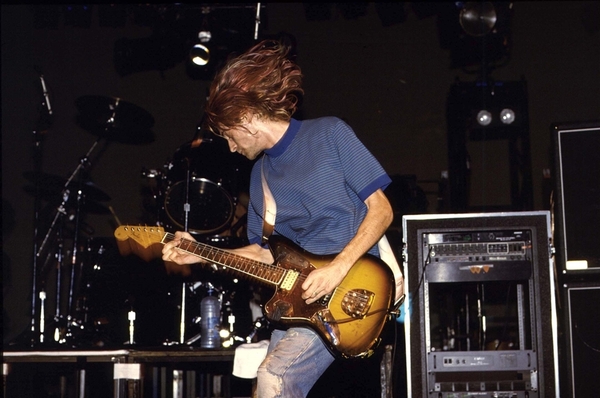
Later on Cobain used between two to eight Marshall cabinets, either Marshall 1960A Slant Cabinets or Marshall 1960AC Vintage Cabinets, depending on the size of the venue. They were loaded with either Celestion 12″ G12M Greenback Speakers or Celestion 12″ Vintage 30 Speakers. He had a disdain for Marshall as a brand and covered the logos with gaffer tape.
BOSS DS-1 Distortion
Cobain used very few pedals onstage, usually only one or two. One of the mainstays in his arsenal was the BOSS DS-1 Distortion pedal, which he always referred to as a Roland EF-1. After Nevermind he switched to the BOSS DS-2 Turbo Distortion, which has added features. “The sound changes with every club we play in, but I’m never satisfied,” he said. “I think the sound I get is mainly a result of the Roland EF-1 distortion box I use. I go through about five a tour.”
Electro-Harmonix Small Clone
The other pedal he relied upon was the Electro-Harmonix Small Clone chorus pedal, which was used live throughout the Nevermind era, and featured on several of that album’s songs, including ‘Come As You Are’ and ‘Smells Like Teen Spirit’.
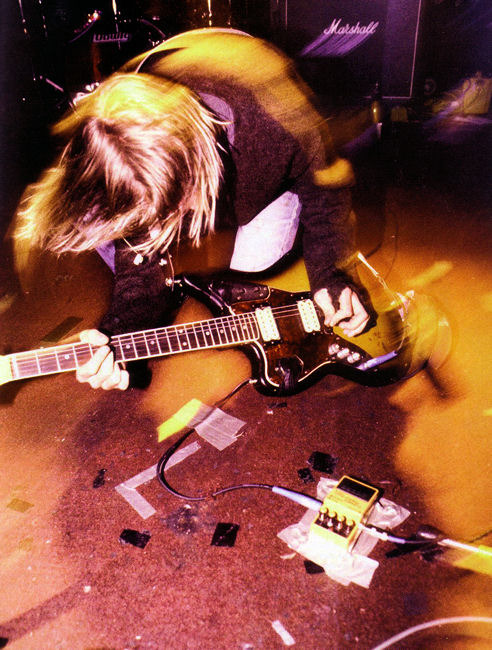
Cobain used Dean Markley strings, gauge .010-.052. The guitar picks he used the most frequently were Dunlop Tortex Standard .60mm picks, in orange.
Keep reading, watching and learning about Nirvana here.

